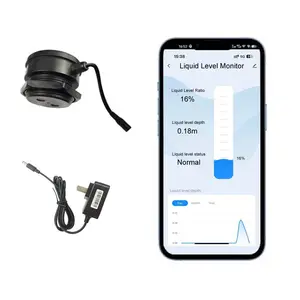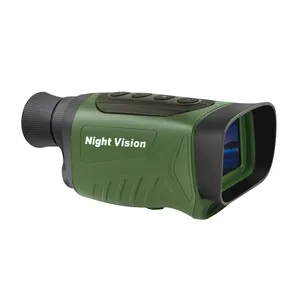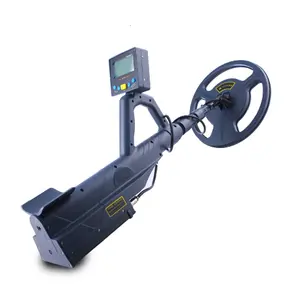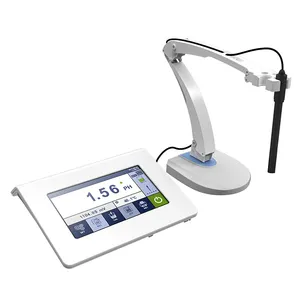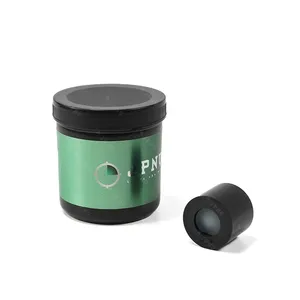Popular in your industry











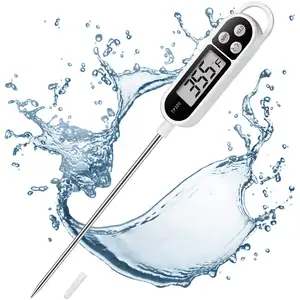






















































About refrig thermometer
Introduction
In the world of food safety, temperature control is a critical factor. It's the invisible shield that protects us from harmful bacteria and potential diseases lurking in our food. This article delves into the importance of food safety, the role of temperature control, and how refrigeration contributes to maintaining food quality. We'll also guide you through the process of choosing the right refrigerator thermometer, understanding its features, and using it effectively. With the right knowledge and tools, you can ensure your food remains safe and fresh, reducing the risk of foodborne illnesses.
Understanding the Importance of Food Safety
Food safety is crucial for sustaining life and promoting good health. Unsafe food, contaminated with harmful bacteria, viruses, parasites, or chemicals, can cause over 200 diseases, including cancers. It can lead to a vicious cycle of disease and malnutrition, affecting infants, young children, the elderly, and the sick. Ensuring food safety requires collaboration between governments, producers, and consumers. Foodborne illnesses, whether infectious or toxic, are often caused by bacteria, viruses, parasites, or chemical substances entering the body through contaminated food.
Why Temperature Control is Crucial
Temperature control in food production and preparation is crucial for safety and quality preservation. By controlling temperature, you can manage bacteria levels that spoil food and cause illness. Heat kills bacteria, while cold temperatures slow down their growth to prevent harmful levels. The Danger Zone, a temperature range from 20 – 45 °C (68 – 113 °F), is where bacteria grow and multiply fastest. It's essential to keep foods out of this zone using approved methods to chill, heat, and store foods.
The Role of Refrigeration in Food Safety
Refrigeration plays a pivotal role in food safety by controlling and maintaining optimal storage temperatures for different types of food. Lowering the storage temperature of perishable foods significantly reduces the reproduction speed of microorganisms, which are the cause of food decomposition and potential illnesses. Refrigeration slows down the metabolism of organic matter, inhibiting altering processes in food, such as certain enzymatic reactions or the metabolic degradation of proteins. This process prevents the spoilage of food and potential health issues after consumption. Thus, refrigeration is a key component in ensuring food safety.
Choosing the Right Refrigerator Thermometer
Choosing the right refrigerator thermometer can be an inexpensive way to save real money. If your refrigerator is too warm, food will spoil; if it's too cold, you're paying for more electricity than you need. A refrigerator thermometer is especially useful if your fridge has only a dial thermostat. You can also use it to check that temperatures are still safe on a model with a built-in thermometer. Keep your food safe and at the right temperature with a refrigerator thermometer. The top thermometers measure your cold storage temperature accurately and are great backups in case of power failure.
Types of Refrigerator Thermometers
There are several types of refrigerator thermometers available. The dual-sensor thermometer is a versatile option with two sensors and an easy-to-read display. The analog refrigerator/freezer thermometer is a durable, budget-friendly choice that doesn't require batteries. The wide-range fridge thermometer offers a wide temperature range and is simple to operate. The wireless refrigerator thermometer features wireless sensors and both visual and audible alarms. The digital fridge/freezer thermometer has a magnetic backing for easy display. The programmable refrigerator thermometer comes with wireless sensors and programmable alarms. Lastly, the compact zipper-pull thermometer is compact, durable, and waterproof.
Key Features to Consider
When choosing a refrigerator thermometer, consider these key features. The digital fridge/freezer thermometer comes with a high/low temperature alarm setting, useful for alerting when temperatures drop. It also has a max/min temperature memory feature, allowing you to track temperature fluctuations. The thermometer is equipped with a waterproof temperature sensor, ensuring durability and reliability. It's Celsius and Fahrenheit switchable, catering to different user preferences. Additionally, it has a magnetic fixture on the back of the main unit for easy installation. The thermometer's measuring range is -20 to +50 C&F (room temperature) / -50 to +70 C&F (external probe temperature), with an accuracy of +/- 1 C.
Using Your Refrigerator Thermometer Effectively
To use your refrigerator thermometer effectively, it's crucial to place it correctly. For an accurate representation of the internal average temperature, place the thermometer just below the top shelf, in the middle, or closer to the door. Regularly check the temperature. If it's a few degrees warmer than ideal, reduce the temperature setting. If it's significantly cooler, increase it. Proper placement and regular checks ensure a healthier fridge environment and accurate temperature control.
Proper Placement and Calibration
Proper placement and calibration of your refrigerator thermometer are crucial for accurate readings. When the thermometer leaves the factory, it's calibrated to be accurate within one degree. However, mishandling or time can affect its accuracy. To verify, test the reading against a known standard like melting ice water. If incorrect, recalibrate it. Dial thermometers can be calibrated by adjusting the pointer hub, while digital thermometers usually have a reset button or recalibration screw. Regular checks and recalibration ensure your thermometer maintains its accuracy, crucial for food safety.
Regular Checks and Maintenance
Regular checks and maintenance of your refrigerator's temperature are crucial. If the temperature reading feels notably warmer than 37° F, use a stand-alone refrigerator thermometer to assess the discrepancy. If the interior is warmer, adjust the fridge temperature and wait 24 hours to see if the internal temperature drops. If the temperature doesn't budge, clean around your compressor and coils to remove dust and dirt, which prevent efficient cooling. Regular maintenance and checks can help ensure your refrigerator is functioning optimally and maintaining the desired temperature.
Interpreting Thermometer Readings
Interpreting the readings of your refrigerator thermometer is crucial for food safety. Refrigerators should be 4°C (40°F) or colder, while freezers need to be below -18°C (0°F). If you have a thermometer in your fridge, you can check the temperature after a power outage. If it's at 4°C (40°F) or colder, your food is safe. You can also use an instant read meat thermometer to test your refrigerator temperature by measuring the temperature of a glass of water left in the fridge overnight.
Conclusion
In conclusion, maintaining food safety is a shared responsibility that requires careful attention to temperature control. A refrigerator thermometer is a simple yet powerful tool that helps in this endeavor. It allows you to monitor and adjust your refrigerator's temperature, ensuring it stays out of the 'Danger Zone' where harmful bacteria thrive. Choosing the right thermometer, understanding its features, and using it effectively can make a significant difference in preserving food quality and preventing foodborne illnesses. Regular checks, proper placement, and calibration are key to accurate readings. By taking these steps, you can contribute to a safer, healthier food environment for yourself and your loved ones.
